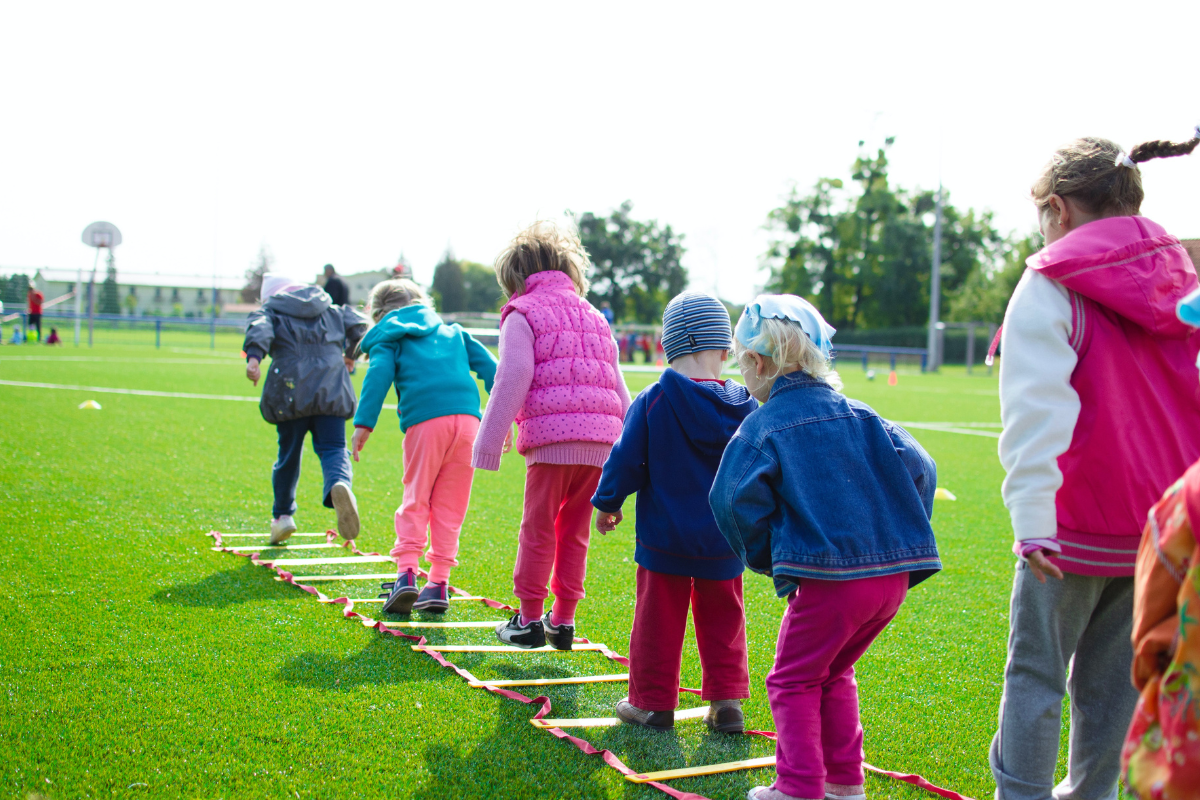In today’s rapidly evolving digital landscape, technology has become an integral part of our daily lives, profoundly influencing how we communicate, learn, and interact with the world. For children, who are growing up in this tech-centric environment, the impact is even more significant. From the use of smartphones and tablets to engaging with social media and interactive educational tools, children are being exposed to technology from a very young age.
Schools are increasingly adopting smart classrooms, and households are equipped with the latest digital devices, making technology both a tool for learning and a source of entertainment. However, this pervasive use of technology raises important questions about its influence on children's development.
This article explores the multifaceted effects of technology on various aspects of children’s development—cognitive, physical, social-emotional, and language development.
Cognitive Development

Cognitive development refers to the processes by which children learn to think, explore, and understand the world around them. This development includes abilities such as memory, attention, problem-solving, and decision-making. As children interact with their environment, these cognitive skills are honed, enabling them to process information, solve problems, and make informed decisions.
In today’s digital age, technology plays a crucial role in shaping cognitive development, especially in tech-driven environments like Dubai. While technology can enhance certain cognitive skills, it also poses challenges that need careful consideration.
Positive Impacts to Cognitive Development
- Enhanced Learning and Memory:
Technology provides children with access to a wealth of information and interactive tools that can significantly boost cognitive skills. Educational apps, games, and digital platforms encourage active learning by engaging children in activities that improve their memory, critical thinking, and problem-solving abilities. For instance, interactive learning apps can help children develop better recall and application of knowledge through repetition and practical exercises.
- Improved Problem-Solving Skills:
Games and simulations offered by digital platforms challenge children to think critically and solve complex problems. These tools often require children to plan, strategize, and execute solutions, which strengthens their cognitive flexibility and ability to tackle challenges in real-world scenarios.
Negative Impacts on Cognitive Development
- Reduced Attention Span:
One of the significant concerns associated with the excessive use of technology is its potential to reduce attention span. The fast-paced nature of digital content, where information is consumed in quick, bite-sized pieces, can make it difficult for children to focus on longer, more demanding tasks. This constant stimulation can lead to difficulties in maintaining sustained attention, which is crucial for deep learning and academic success.
- Over-Reliance on Technology:
While technology offers valuable tools for learning, there is a risk that children might become overly dependent on these tools, leading to a decline in their ability to think independently. For example, relying too much on calculators or educational apps might limit the development of fundamental skills such as mental arithmetic or basic problem-solving without digital assistance.
Statistics and Context to Cognitive Development
In Dubai, technology is deeply integrated into children's lives, with 92% of parents allowing their children to interact with digital devices, particularly mobile phones (80%). While this widespread use has its benefits, 63% of parents in the UAE express concerns about the potential negative impact on their children's health, including cognitive effects such as reduced attention spans and the strain of prolonged screen time.
Globally, similar concerns are echoed, with studies indicating that children worldwide are spending increasing amounts of time on digital devices. For example, in Europe and the United States, children as young as five years old are frequently engaged with smartphones and tablets, which, while fostering digital literacy, also pose challenges to cognitive development.
Language Development

Language development is the process by which children learn to communicate effectively, starting with basic sounds and words and eventually progressing to more complex sentences and narratives. This process is crucial during early childhood as it forms the foundation for literacy, social interaction, and academic success.
In the context of technology, language development can be influenced in various ways, both positively and negatively.
Positive Impacts on Language Development
- Exposure to Diverse Vocabulary:
Educational apps and digital storytelling platforms provide children with access to a broader range of vocabulary than they might encounter in everyday conversations. These tools can introduce new words and concepts, helping to expand a child's language skills.
- Interactive Learning:
Many digital platforms offer interactive language learning experiences. For example, apps like Duolingo or language-based games engage children in exercises that reinforce grammar, vocabulary, and pronunciation, making language learning more engaging and effective.
- Multilingual Learning:
In a multicultural city like Dubai, where multiple languages are spoken, technology can facilitate multilingual education. Children can use apps to learn and practice languages beyond their native tongue, which is particularly beneficial in a diverse environment.
Negative Impacts on Language Development
- Delayed Language Skills: Excessive screen time, particularly passive consumption such as watching videos without interaction, can lead to delays in language development. Young children, especially those under two years old, need face-to-face interactions to develop foundational language skills, and too much screen time can limit these vital social interactions.
- Reduction in Conversational Practice: While digital tools can offer language learning, they cannot fully replace the benefits of real-life conversations. Children who spend too much time on screens may have fewer opportunities to engage in back-and-forth dialogues, which are crucial for developing conversational skills and understanding social cues.
Statistics and Context to Language Development
In the UAE, many parents recognize the educational benefits of technology, with 81% believing that educational videos support their child’s development. However, it is also important to note that 63% of parents are concerned about the negative impacts of excessive screen time, which includes potential delays in language acquisition.
Globally, the trend is similar. For example, in the United States, almost all children between the ages of 13 and 18 own a smartphone, and many use these devices for educational purposes. However, concerns about the impact of this screen time on language development are also prevalent.
Physical Development

Physical development involves the growth and strengthening of the body, including gross and fine motor skills, balance, and coordination. Technology has a dual impact on physical development, with both potential benefits and drawbacks.
Positive Impacts to Physical Development
- Promotion of Physical Activity:
Some technology-based tools and apps encourage physical activity, such as interactive games that require movement (e.g., dance or sports games) or fitness apps designed for children. These can help children stay active and develop motor skills in a fun, engaging way.
- Access to Health Resources:
Technology provides access to a range of health-related information and resources that can promote physical well-being. For example, apps that monitor activity levels or provide guidance on healthy eating can support overall physical development.
Negative Impacts to Physical Development
- Sedentary Lifestyle:
One of the most significant concerns with technology use is its contribution to a sedentary lifestyle. Children who spend large amounts of time on screens—whether watching videos, playing games, or using social media—are less likely to engage in physical activities, which can lead to issues such as obesity and poor physical fitness.
- Sleep Disruption:
Excessive screen time, especially before bed, can interfere with sleep patterns. The blue light emitted by screens can disrupt the body’s natural sleep-wake cycle, making it harder for children to fall asleep and get the rest they need for healthy growth and development.
Statistics and Context to Physical Development
In Dubai, concerns about the physical impacts of technology are growing. According to surveys, 47% of parents in the UAE allow their children to spend 1-2 hours per session with technology, which can accumulate significant daily screen time. Additionally, there is a generational difference, with parents over 40 being more liberal in their child’s interactions with technology, allowing longer periods of use.
Globally, children are also spending increased amounts of time on screens. For example, in the United States, children between the ages of 13 and 18 spend an average of over 7 hours per day on screen-based activities, which significantly impacts their physical activity levels.
Social-Emotional Development

Social-emotional development refers to the process by which children learn to understand and manage emotions, establish positive relationships, and develop empathy and social skills. Technology influences this aspect of development in both positive and negative ways.
Positive Impacts to Social-Emotional Development
- Social Connectivity:
Technology, particularly social media, and messaging apps, enables children to stay connected with family and friends, fostering a sense of belonging and support. This is especially important in multicultural environments like Dubai, where families may be geographically dispersed.
- Emotional Expression:
Digital platforms can provide children with outlets to express their emotions, whether through creative activities like art and music apps or through writing and sharing content online.
Negative Impacts to Social-Emotional Development
- Risk of Cyberbullying:
One of the most significant risks associated with children’s use of technology is exposure to cyberbullying. Negative interactions online can lead to emotional distress, anxiety, and depression, significantly impacting social-emotional development.
- Reduced Face-to-Face Interaction:
While digital communication is convenient, it cannot replace the value of face-to-face interactions. Children who spend more time on screens may have fewer opportunities to develop essential social skills, such as reading body language and tone of voice, which are critical for building strong interpersonal relationships.
Statistics and Context to Social-Emotional Development
In the UAE, 75% of children view technology and the internet as important to their independence, which underscores the role of digital platforms in their social lives. However, 67% of children report experiencing online harms, such as exposure to inappropriate content or cyberbullying, which highlights the need for vigilant parental guidance and protective measures.
Globally, social media usage among children continues to rise, with platforms like TikTok and Instagram becoming central to their social lives. However, this increased connectivity comes with challenges, including the risk of cyberbullying and the potential for reduced face-to-face interaction.
Parental Role

Parents play a crucial role in moderating the influence of technology on their children’s development. While technology can be beneficial, it is essential to establish boundaries and encourage a balanced approach to digital use.
Screen Time Guidelines
- For Children Aged 0-2 Years: It is generally recommended to avoid screen time for children under 2 years, except for video chatting with family members. Young children learn best through direct interaction with caregivers and their environment.
- For Children Aged 3-5 Years: Limit screen time to no more than 1 hour per day of high-quality programming. It’s important to co-view with children to help them understand what they are seeing and apply it to the world around them.
- For Children Aged 6-12 Years: Screen time should be limited to 1-2 hours per day, ensuring it doesn’t interfere with sleep, physical activity, or other healthy behaviors. Encourage activities that promote creativity and critical thinking.
Creating a Balanced Digital Environment
- Promote Physical Activities: Encourage children to engage in outdoor activities and sports to balance the sedentary nature of screen-based activities.
- Encourage Social Interaction: Facilitate opportunities for face-to-face social interactions to develop essential social skills.
- Monitor Content: Use parental controls and monitoring tools to ensure that children are exposed to age-appropriate content.
- Model Healthy Behavior: Parents should model balanced technology use, demonstrating how to integrate digital tools into daily life without becoming overly reliant on them.
Technology undeniably plays a significant role in shaping the development of today’s children. While it offers numerous benefits, such as enhancing learning, improving problem-solving skills, and providing access to diverse educational resources, it also presents challenges that cannot be ignored. Excessive screen time, reduced physical activity, and the risks associated with social media use are all factors that can negatively impact a child’s cognitive, physical, social-emotional, and language development.
In Dubai and globally, the key to leveraging technology effectively lies in balance. By establishing clear guidelines, encouraging healthy habits, and fostering open communication, parents and educators can ensure that children reap the benefits of technology while minimizing its potential drawbacks.
As technology continues to evolve, so too must our approach to integrating it into children’s lives—ensuring that it serves as a tool for growth rather than an impediment to their overall well-being.
*Data was collected from the following Sources: Internet Matters, YouGov Omnibus and Statista.
Also Read:














